What to do if someone eats cucumber seedlings in a greenhouse, how to protect
Before the new planting season begins, it's a good idea to talk about who eats the cucumber seedlings in the greenhouse. Not only we, people, eat crispy cucumbers with pleasure, rodents, insects, worms love to feast on this plant. You can lose all seedlings in one night and still not know who did it.
Who eats cucumber seedlings in the garden
Greenhouse owners will agree that the main pests of cucumbers that affect adult plants and seedlings are whitefly, wireworm, bear, slugs, and winter moth caterpillars.
How to protect cucumbers from a bear
Cucumbers suffer from bear cucumbers both in the open field and in greenhouses. The pest is especially common in the middle zone of the Russian Federation. It is possible that you have a bear if the seedlings of cucumbers or already grown plants are drying out.
Sexually mature individuals - adults - hibernate deep in the ground. In early spring, pests wake up and lay eggs in the nests. There can be up to 500 of them in one clutch. Adults and their larvae damage the roots of cucumbers. They are attracted to cucumber beds with seedlings by moist loose soil, pests make many moves in the ground. During the day, the pest sits in holes, and at night it eats roots from the seedlings of cucumbers.
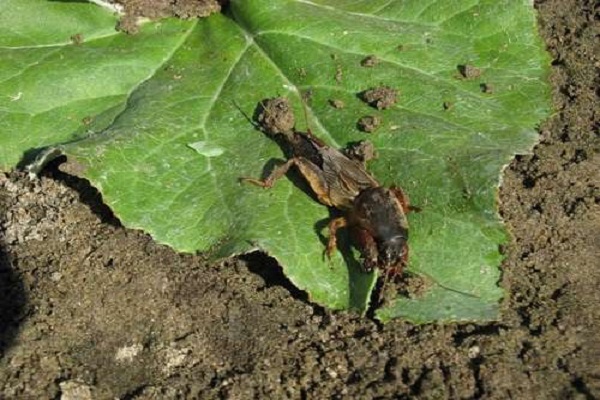
To prevent the bear from eating the seedlings, traps are made from manure. Fresh manure is a favorite treat of this pest. Fishing pits measuring 50 by 50 cm are dug in the fall and filled with cow dung. When the temperature is below freezing, manure is taken out and scattered on the ground. Bears are sleeping at this time, so they do not move and freeze.
You can protect newly planted cucumbers from the pest with kerosene. To scare off the pest, heaps of branches or boards are laid out around the ridge and plentifully watered with kerosene. Medvedka goes away from the fragrant beds. For those who prefer chemical preparations to protect seedlings, insecticides are suitable: Thunder, Fenaxin, Grizzly. Bait is prepared from them.
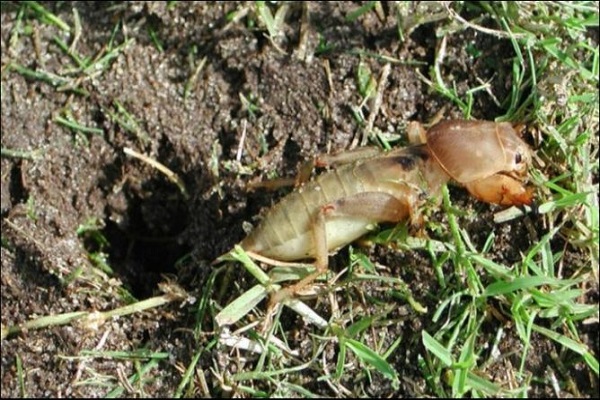
Who cuts seedlings
The problem that many summer residents face: the shoots of cucumbers, which yesterday were vigorously green in the greenhouse, have disappeared today. Hemp sticks out of the ground, and cotyledon leaves lie nearby. Unknown pests gnaw at the stem, bite right at ground level.
It is difficult to determine who eaten up the cucumber shoots, since it can be both a wireworm and a May beetle larva. Often the gray caterpillars of the scoop gnaw young cucumber stalks; they can be found if you dig up the ground next to the dead plant.

May beetle larvae need to be harvested while digging the ridge before planting cucumbers.Treat the ascended plants with onion or garlic infusion, the worms do not like them. Chemicals are more reliable means to combat the pest (beetle). To get rid of it, you can safely recommend to summer residents drugs:
- Nemabakt;
- Aktara;
- Antichrush.
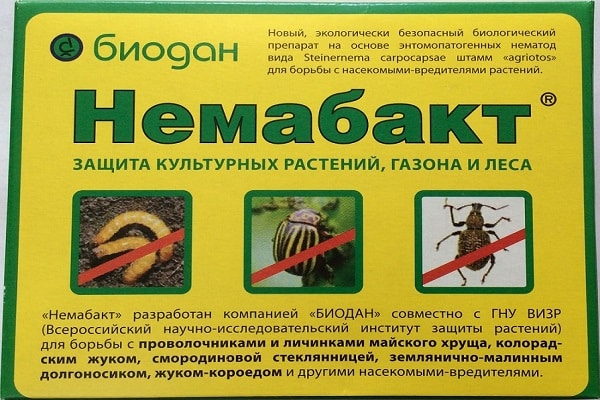
Wireworm
The wireworm is found in most regions located in the temperate climatic zone. Wireworm is called click beetle larvaliving in the soil for a long time (2-5 years). The larva in the second year of life eats the roots of the plant, leading to its death.
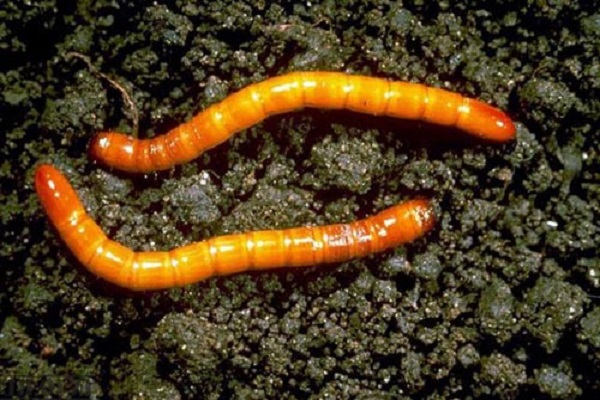
The wireworm, due to its dense chitinous cover, can easily penetrate the stems of adult cucumbers. The main whip of a cucumber, in which the wireworm has settled, bends over time and gradually dries out.
You can reduce the number of pest larvae using traps. Arrange them in the spring in thawed ground, season with chopped vegetables. To save the cucumbers, the drug "Bazudin" is instilled along the perimeter of the ridges, it is released in the form of a powder.
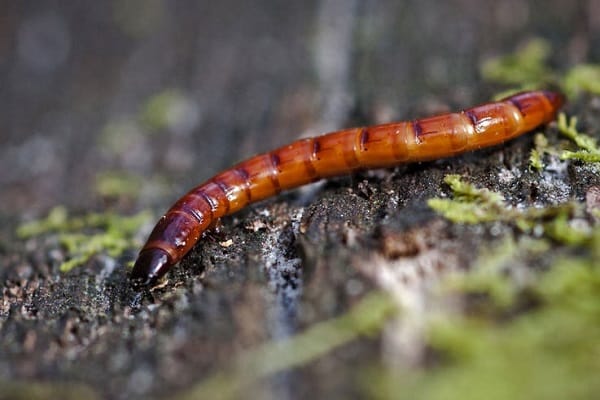
Winter scoop
The winter scoop is a large (up to 2 cm) butterfly with a wingspan of about 5 cm; it lays eggs on any plants, including cucumber seedlings. If the stalk of the seedlings at ground level has become thin or a stump sticks out of the ground instead, it means that the young cucumbers in the greenhouse are being ruined by the caterpillar of the winter scoop.
Caterpillars can reach a length of 5 cm, they are brown or dark gray (almost black). Gluttonous pests live in the ground, eat underground parts of plants, primarily damage the root. To protect the root part from the scoop, you need to add one of the preparations into the holes before planting the cucumbers:
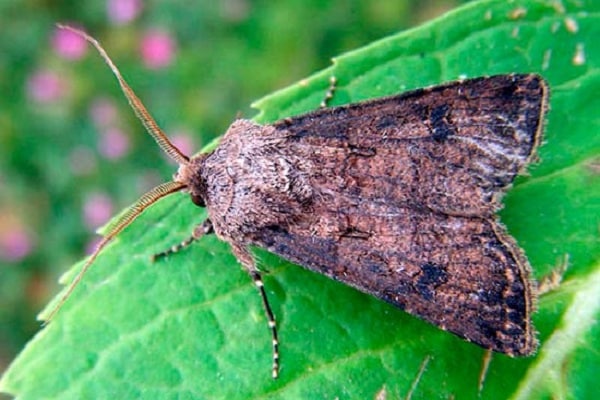
- Initiative;
- Zemlin;
- Bazudin.
As a preventive measure, when digging the soil, select and destroy caterpillars and larvae. Weed removal is also an effective preventive measure against the winter moth and its larvae.

Who eats seedlings
The whitefly has become a real scourge of greenhouses - a butterfly with a pale yellow body 0.9-1.1 mm long, the surface of two pairs of wings is covered with white pollen. Butterfly larvae eat seedlings; their flat-round body is covered with small thorns.
The female survives in winter at -12 ° C. During the season, 10 or more generations of whitefly can appear from one individual. The pest destroys the seedlings of cucumbers and oppresses the adult plants: the larvae suck out the juice, the adults carry the fungal infection. It is very difficult to destroy the whitefly.
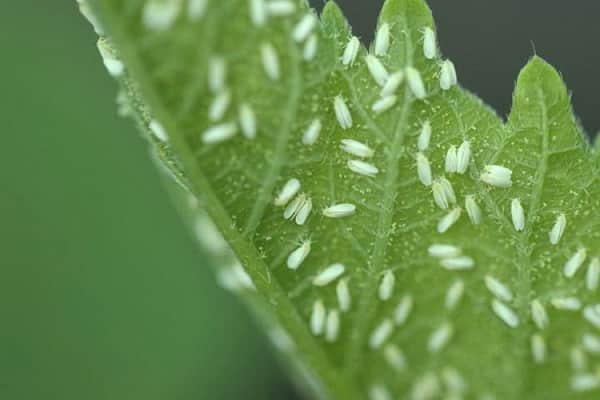
You can determine that a whitefly is eating your cucumber by the following signs:
- white dots are visible on the leaves;
- sticky discharge is noticeable on the stem surface;
- there are twisted leaves on the cucumbers;
- on the lower surface of the leaf plate of cucumbers, larvae resembling scales are visible;
- if you shake a cucumber whip, white moths will appear.
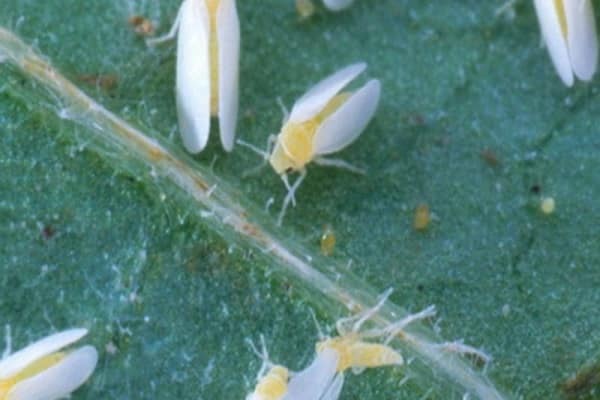
How to protect seedlings from whitefly
Seedling protection begins long before planting it in the greenhouse. It is necessary every autumn, after harvesting, to process the soil and greenhouse structures with the help of sulfur blocks, having previously cleared the ridges of plant residues. It is better to set fire to checkers at night. Remove the top layer of soil (5-7 cm) together with the larvae of the pest from the greenhouse.
You can speed up the destruction of the pest on cucumbers with the help of hand-made traps, for this you need to have the following on hand:
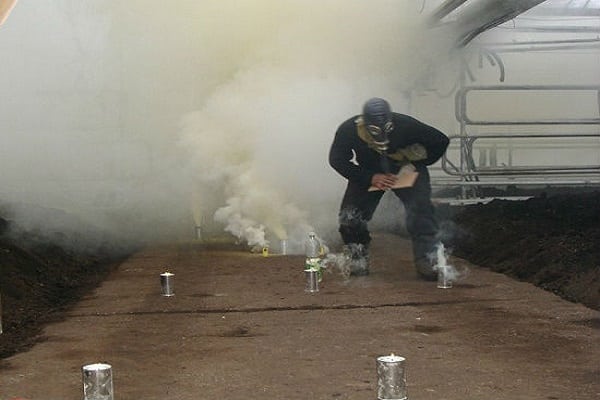
- castor oil (1 hour);
- rosin (1 h);
- honey (1 h);
- petroleum jelly (1 h).
Add the remaining components to the heated rosin and mix everything. When the mixture has cooled, spread it on long strips of paper, hang the resulting ribbons in the greenhouse. The pest control system can be expanded with the help of folk recipes or chemicals.
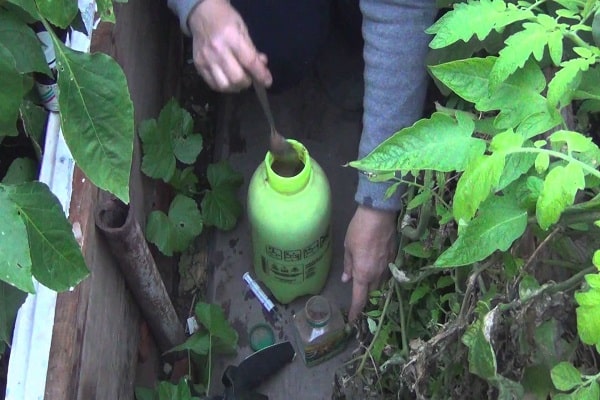
From folk methods, recipes for infusions are useful, the active component of which can be:
- garlic;
- dandelion roots;
- yarrow.

To prevent the pest from eating immature cucumber stalks, infusions should be processed at least once every 10 days. For those who do not trust folk methods, chemistry will come to the rescue. Summer residents fight whitefly with drugs:
- Actellik;
- Fufanon;
- Biotlin.
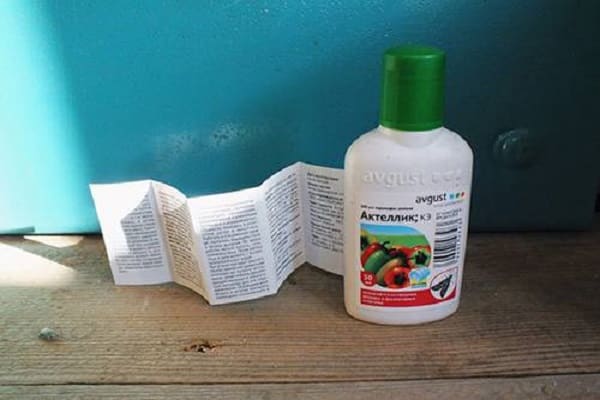
Slugs on cucumber seedlings
In the humid climate of greenhouses, slugs reproduce well; they can be found in almost any region of the European part of the country. The insect has no limbs, its surface is covered with mucus, it looks like a snail without a shell.
The pest begins an active life at night, during the day it hides at a depth of 8 cm. At night, slugs gnaw through the whips and leaves of cucumbers, first of all, tender, young sprouts suffer. The pest is very voracious, eats most of the leaves. When the fruiting period begins, the slugs eat the ovaries, begin to gnaw large cucumbers. A large percentage of the crop can be lost due to slugs.
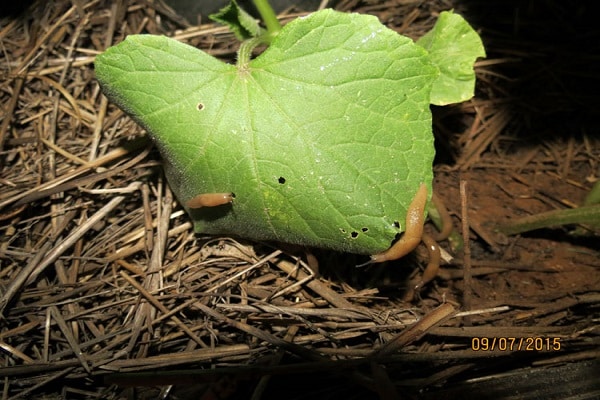
What to do to reduce the number of slugs in the greenhouse, each summer resident decides individually. Some people prefer to place baits from tomato tops, lettuce and cucumbers from pests around the perimeter of the ridge. Periodically destroy plant residues together with slugs and replace with new ones. Some pests can be removed by hand.
The pest has a very delicate abdomen, they will not climb into the beds with cucumbers if they are filled with any material from the list around them around the entire perimeter:

- sawdust;
- needles;
- coarse sand;
- walnut shell;
- broken shells.
Of the chemical preparations, the "Thunderstorm" remedy is popular against slugs; it lasts for 3 weeks. During the season, at least 2 treatments will be required from pests. Another drug "Slizneed" is used once a summer, its effect is shorter and lasts only 2 weeks. The preparations are in the form of granules, they need to be laid out not only along the border of the ridge, but also between the bushes.

Aphid
Seedlings may die due to the fault of aphids if soil taken from the garden was used for planting, it was not treated from pests and diseases. Aphids are very prolific, up to 20 generations of the pest appear over the summer. Optimal conditions for active reproduction of the pest are high humidity and air temperatures from 25 ° C.
Aphids suck juice from leaves, stalks and stems of cucumber. You can fight the pest using folk methods. When the cucumber seedlings are still small, they can simply be washed with soapy water. It is difficult to rinse adult bushes, so they prepare a herbal infusion with the addition of soap and spray the leaves and bushes from pests.

Who eats the seeds
The larva of the sprout fly causes great damage to cucumbers. All pumpkin crops suffer from this pest. Many summer residents complain about poor germination when sowing seeds. In some cases, the problem is in the seed, but if it is impossible to find its remains in the hole, this means that someone is eating all the seeds of the cucumbers.
The seeds of the sprout fly larva are eaten. This insect is gray in color, the body reaches 5 mm in length, the pest begins in spring. The fly makes masonry in wet places, prefers to lay it on manure, poorly embedded in the soil. Larvae appear after 10 days; over the summer, up to 3 generations of the pest can appear.
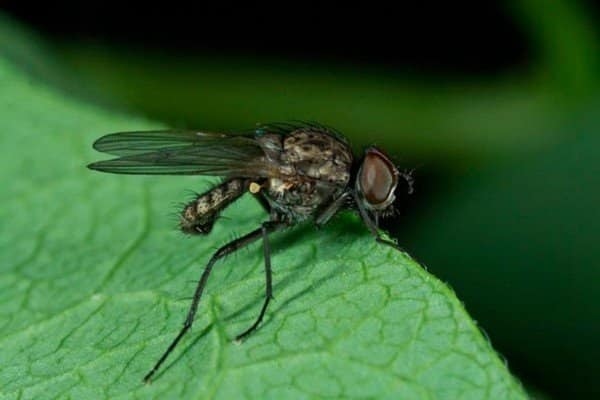
To prevent the spread of the sprout fly, simple measures are sufficient:
- dig deep into the soil;
- carefully embed manure into the ground.
On the advice of experienced gardeners, the drug "Muravyin" can neutralize the larvae, when you plant seeds, it must be mixed with the soil and sprinkled on the surface of the hole.
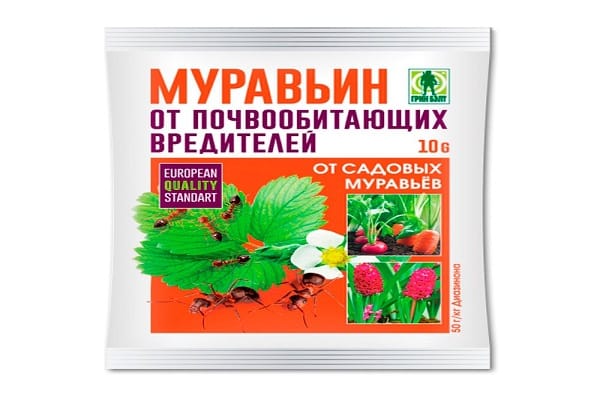
Information about pests and how to deal with them will help to take the necessary measures in time to save the seedlings of cucumbers.
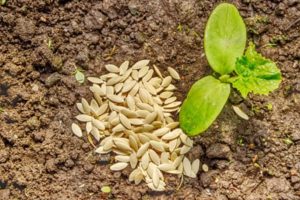
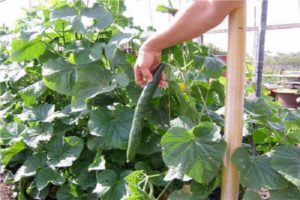
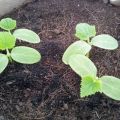
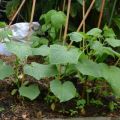

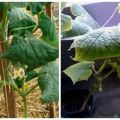
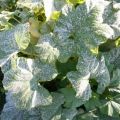

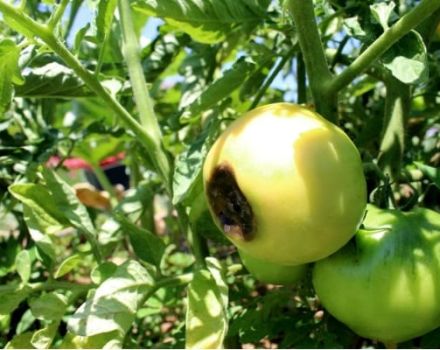
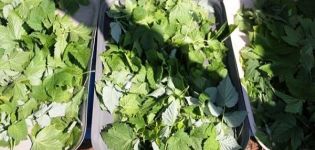
I use the "Phenaxin" remedy for such problems, it rather quickly scares away all pests. After it, I strongly recommend fertilizing the soil with "BioGrow". With him, the seedlings will not suffer.